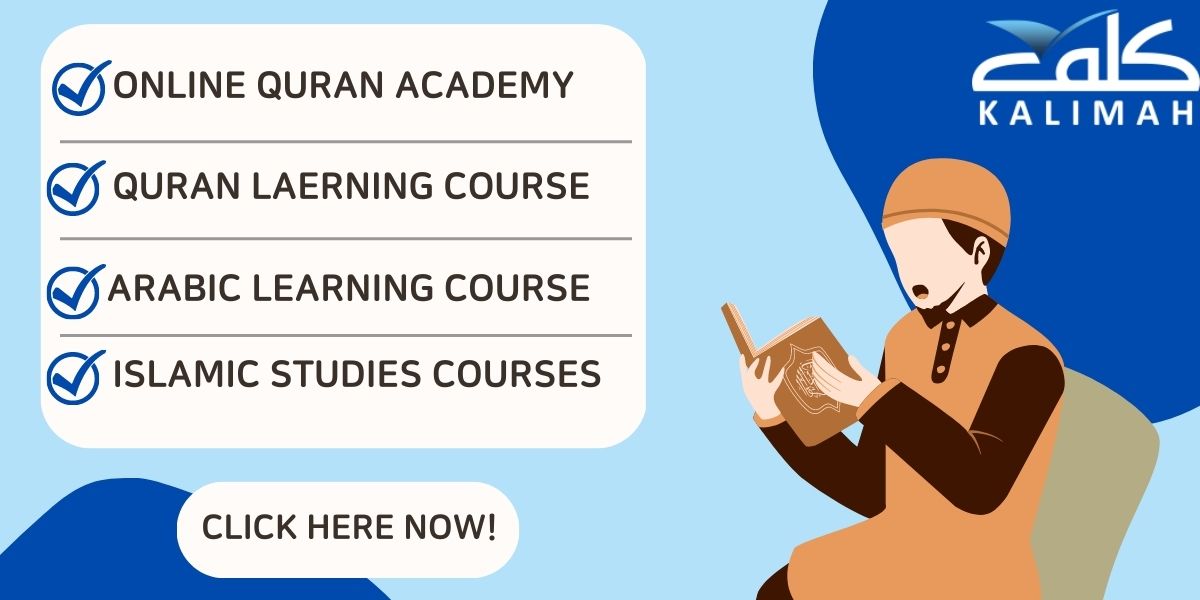Following our previous article on how kids learn Arabic, where I spoke with my colleague Ustadha Angham Abdul Halim, supervisor of the Children’s Education Department at Kalimah Center, today we’ll delve deeper into how to teach kids Arabic effectively.
We’ll tap into Ustadha Angham’s teaching expertise and explore some of the hands-on methods used in our Children’s Arabic program. Practical insights that will help people who ask, “How to teach Arabic to non-native kids?” and parents who ask, “How can a parent teach Arabic for kids?”.
How to Teach Arabic to Non-Native Kids?
I began our conversation by asking Ustadha Angham how she approaches teaching Arabic to kids step by step. She emphasized the importance of engaging, visually appealing materials, and a teaching style that is both varied and interactive.
“In every step of teaching Arabic to children, the methods must be visually attractive and interactive. The style should be exciting, mixing games, stories, and other engaging activities.”

Step 1: Teaching the Arabic Alphabet to Kids
Ustadha Angham explained that teaching the Arabic alphabet to children requires a slower, more deliberate approach than teaching adults. The process must be interactive, and the use of games is essential to keep the kids engaged.
For example, when teaching the alphabet, she recommends starting with a complete overview of all the letters. This gives the child a sense of what they will be learning. Then, she divides the alphabet into four groups for detailed study:
- Group 1: From Alif (أ) to Kha (خ)
- Group 2: From Dal (د) to Dad (ض)
- Group 3: From Ta (ط) to Kaf (ك)
- Group 4: From Lam (ل) to Ya (ي)
Each group is introduced with the Arabic letter, its English transliteration, and examples. Exercises follow to reinforce what the children have learned.
Example Exercise:
- Letter: أ (Alif)
- Transliteration: Alif
- Example Word: أسد (Asad) – Lion

*From Kalimah’s Arabic Course for Kids.
Practice: Write the letter “أ” in your notebook, trace it, and say the word “Asad” aloud three times.
Ustadha Angham also stresses the importance of teaching the letters that sound or look similar, such as Qaaf (ق) and Kaaf (ك) or Saad (ص) and Daad (ض). This helps prevent confusion and builds a stronger foundation in recognizing and writing the letters.
And this is a game designed by Ustadha Angham, the supervisor of the Arabic Language Teaching Department for Children at Kalimah, to help children practice similar-looking letters.
Step 2: Teaching Arabic Reading to Kids
Reading begins with the letters but quickly moves to recognizing their shapes in different word positions (beginning, middle, and end).
She encourages starting with teaching the basic vowels – Fatha (فتحة), Kasra (كسرة), Damma (ضمة) – and then introducing common linguistic phenomena like Sukoon (سكون), Shadda (شدة), Tanween (تنوين), and the differences between Shamsiya (شمسية) and Qamariya (قمرية) letters.

*From Kalimah’s Arabic Course for Children curriculum.
“It’s essential to focus on the child’s pronunciation, ensuring that each letter is articulated correctly. This can be reinforced by exercises that require the child to extract these linguistic phenomena from any text they are reading.”
Example Exercise:
- Word: كُتِبَ (Kuteba) – Tree
- Task: Identify the Fatha, Kasra, and Damma in the word “Kuteba” and practice reading it aloud.
Step 3: Teaching Arabic Speaking to Kids
Speaking Arabic, Ustadha Angham explained, should begin with basic communication skills – such as teaching the child how to introduce themselves – before moving on to more complex dialogues.
“We build on the child’s reading skills by integrating speaking exercises. For example, after reading a story, the child can be encouraged to summarize it in their own words.”
This approach helps solidify the child’s understanding of the language while building their confidence in using Arabic to express themselves.
Example Exercise:
- Dialogue Practice: “My name is…” – “اسمي…” (Ismee…)
And here’s a sample, provided by the Arabic language course for children at the Kalimah Center, that kids can use to introduce themselves in a very simple and brief way, as a start.

Step 4: Teaching Arabic Writing to Kids
Writing, Ustadha Angham shared, to some kids is the most challenging skill to master. The focus should be on helping the child recognize and write each letter individually before they learn to connect them in words.
“It’s important to differentiate between the vowel marks and how they should be written. For instance, the child needs to understand that a Waaw (و) is not the same as a Damma (ضمة).”
As the child’s skills improve, they can move on to writing simple words and eventually short sentences.
Example Exercise:
- Task: Write the word “كتاب” (Kitaab) – Book.
- Step 1: Write each letter independently: ك (Kaaf), ت (Taa), ا (Alif), ب (Baa).
- Step 2: Practice connecting the letters to form the word.
Step 5: Teaching Arabic Grammar to Kids
When it comes to grammar, Ustadha Angham’s approach is to integrate it with stories, Q&A sessions, and games. This makes the learning process fun and helps the child understand grammar rules within a context.
“We start with basic concepts like masculine and feminine forms, nouns and adjectives, and basic verb conjugations. This way, the child learns grammar naturally, through practice and play.”
Example Exercise:
- Storytime: Read a short story and identify the masculine and feminine words.
- Task: In the story, find a masculine noun and its matching feminine form.
Step 6: Teaching Arabic Numbers to Kids
Finally, teaching numbers is crucial. Start with recognizing and writing the numbers in Arabic, then move on to simple counting and basic arithmetic. Games and songs are great tools for making numbers fun and memorable.
Example Exercise:
- Number: ١ (Wahed) – 1
- Task: Practice writing the number “١” and count from 1 to 10 in Arabic.

Games for Teaching Arabic to Kids
Ustazah Angham shared how she incorporates games into her lessons.
“Games are a fantastic way to reinforce what kids have learned. They are interactive, which keeps children engaged, and they often include elements of competition, which motivates them to improve.”
These games can be used as a supplementary tool alongside more traditional teaching methods. They are particularly useful for practicing and reinforcing lessons at home.
Here are some online games developed by Professor Angham Abdul Halim and her team at Kalimah Center, designed to enhance your child’s Arabic learning experience. These games focus on building essential language skills in a fun, interactive way.
1. Unjumble
The لعبة ترتيب الكلمات (lu‘bat tartīb al-kalimāt) is perfect for helping children learn the days of the week in Arabic.
How to Play:
- Objective: Drag and drop words to rearrange the sentence into the correct order.
- Learning Focus: This game strengthens the child’s understanding of sentence structure while reinforcing their knowledge of the days of the week in Arabic.
2. Group Sort
The لعبة تصنيف المجموعات (lu‘bat taṣnīf al-majmū‘āt) helps children learn Arabic demonstratives, a crucial part of basic language skills.
How to Play:
- Objective: Drag and drop each item into its correct group.
- Learning Focus: This game focuses on teaching the correct use of أسماء الإشارة (asmā’ al-ishāra) – Translation: “Demonstrative Pronouns,” such as ذلك – تلك.
3. Open the Box
The لعبة افتح الصندوق (lu‘bat iftaḥ al-ṣundūq) has a focus on animals and birds, making it an exciting way to learn Arabic vocabulary related to the natural world.
How to Play:
- Objective: Tap each box in turn to open it and reveal the item inside. The challenge is to correctly identify the name of the animal or bird in Arabic.
- Learning Focus: This game helps children learn and remember the names of various animals and birds in Arabic.
Arabic Curriculum for Kids
At Kalimah Center, we’ve carefully designed an Arabic curriculum for kids that nurtures their language skills step by step, ensuring they gain a solid foundation in the Arabic language.
Our curriculum is divided into three stages—Beginners, Intermediate, and Advanced—each tailored to meet the developmental needs of young learners as they grow in their understanding of Arabic.
Stage 1: Learn the Arabic Alphabet & Basic Words and Phrases
The first stage of our Arabic curriculum is designed specifically for beginners. The focus here is on familiarizing young learners with the Arabic alphabet, guiding them through pronunciation, reading, and writing.
At this stage, we emphasize practical language skills, helping children express themselves, respond to simple questions, and talk about basic everyday activities in Arabic. By the end of this stage, your child will have a solid understanding of the fundamental building blocks of the Arabic language, setting the stage for more advanced learning.

Stage 2: Learn the Basics of Arabic & The Fundamentals of Linguistics
As your child progresses to the intermediate stage, they will embark on a journey through 8 levels of deeper linguistic exploration. This stage includes completing four additional volumes of the Arabic textbook.
Our intermediate curriculum is heavily based on storytelling, a method we find particularly effective in raising a child’s interest and enhancing their engagement with various topics.
In this stage, your child will begin to discuss a wider range of subjects, including general knowledge, science fiction, and moral values. Moreover, regular Arabic Grammar (Nahu) lessons are introduced, providing the tools needed to start understanding the more complex structures of the language.

Stage 3: Learn Everyday Life Topics & Start a Dialogue in Arabic
The advanced stage of our curriculum is designed to refine your child’s Arabic language skills to a high degree of fluency. At this level, your child will delve into more advanced topics such as scientific facts, social experiences, Islamic history, and contemporary world issues.
Arabic grammar lessons become significantly more detailed, ensuring that your child can not only understand but also apply advanced grammatical concepts in both written and spoken Arabic.
By the end of this stage, your child will be able to read, write, and engage in discussions on a variety of advanced topics confidently, much like a native speaker.
Mastering Arabic Styles: MSA, Fusha, and Classical Arabic
At Kalimah Centre, we believe in providing a comprehensive Arabic education. That’s why our curriculum also focuses on teaching different Arabic styles, including Modern Standard Arabic (MSA), Fusha, and Classical Arabic.
This approach ensures that your child not only masters the language but also gains the versatility to understand and use Arabic across different contexts—whether in books, legal documents, or everyday conversations.
By the time your child completes our curriculum, they will be equipped with the knowledge and skills to navigate the Arabic language in all its forms, opening up a world of opportunities for academic and personal growth.

When Should Children Start Learning Arabic?
The earlier, the better. Starting as early as possible, even with just exposure to the language through songs and stories, can make a big difference.
In our experience, children who begin learning Arabic at a young age tend to pick up the language more quickly and with greater ease.
However, it’s never too late to start. We have had success with children of all ages, and our curriculum is flexible enough to accommodate late starters.
Want to Help Your Kids Learn Arabic the Right Way? Kalimah Center Makes it Fun and Easy!
You found great tips on teaching Arabic to kids, but doing it all yourself can be tough. Let Kalimah Center help! We have everything you need to make learning Arabic an adventure for your child.
Why Kalimah Center? We make learning Arabic fun!
- Expert teachers who LOVE kids: Our native teachers know how to keep kids engaged and excited about learning Arabic.
- Interactive and FUN lessons: We use games, stories, and interactive presentations to make learning fun.
- Focus on the basics: We start with the Arabic alphabet, pronunciation, reading, and writing, so your child builds a strong foundation.
- Learning at the right pace: We have classes for all levels, so your child can learn at their own speed and never feel overwhelmed.
Sign up for a FREE trial today! Let Kalimah Center’s expert teachers and engaging curriculum spark your child’s passion for the Arabic language.

Conclusion
To effectively teach Arabic to non-native children, engaging, visually appealing materials and interactive methods are crucial. Start by introducing the Arabic alphabet through interactive games and exercises, breaking it down into manageable groups to facilitate learning. Emphasize the importance of teaching similar-looking letters together to avoid confusion. Progress from basic alphabet recognition to reading, focusing on vowels and linguistic phenomena, and then integrate speaking and writing skills with practical exercises and dialogues.
Games play a vital role in reinforcing lessons and making learning enjoyable. Incorporate activities that involve identifying letters, practicing vocabulary, and understanding grammar in a fun context. Kalimah Center’s structured curriculum supports children through stages of learning—from beginners to advanced—using a combination of storytelling, practical exercises, and a focus on different Arabic styles to ensure a comprehensive understanding of the language.














